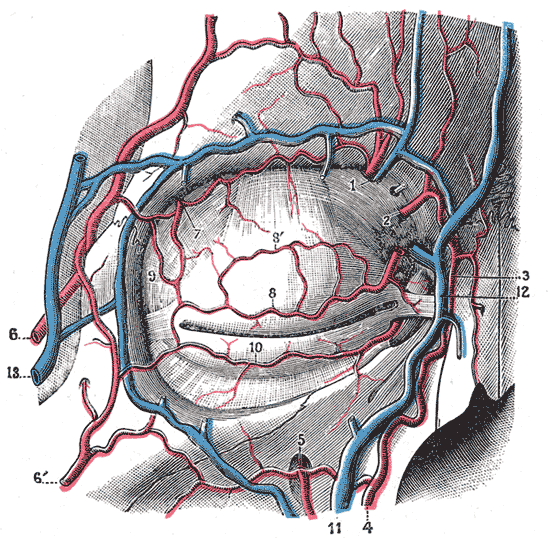Supraorbital vein
| Cardiology Network |
 Discuss Supraorbital vein further in the WikiDoc Cardiology Network |
| Adult Congenital |
|---|
| Biomarkers |
| Cardiac Rehabilitation |
| Congestive Heart Failure |
| CT Angiography |
| Echocardiography |
| Electrophysiology |
| Cardiology General |
| Genetics |
| Health Economics |
| Hypertension |
| Interventional Cardiology |
| MRI |
| Nuclear Cardiology |
| Peripheral Arterial Disease |
| Prevention |
| Public Policy |
| Pulmonary Embolism |
| Stable Angina |
| Valvular Heart Disease |
| Vascular Medicine |
Editor-In-Chief: C. Michael Gibson, M.S., M.D. [1]
The supraorbital vein begins on the forehead where it communicates with the frontal branch of the superficial temporal vein.
It runs downward superficial to the Frontalis muscle, and joins the frontal vein at the medial angle of the orbit to form the angular vein.
Previous to its junction with the frontal vein, it sends through the supraorbital notch into the orbit a branch which communicates with the ophthalmic vein; as this vessel passes through the notch, it receives the frontal diploic vein through a foramen at the bottom of the notch.
The areas drained by this vessel are the forehead, eyebrow and upper eyelid.
Additional images
-
Bloodvessels of the eyelids, front view.
